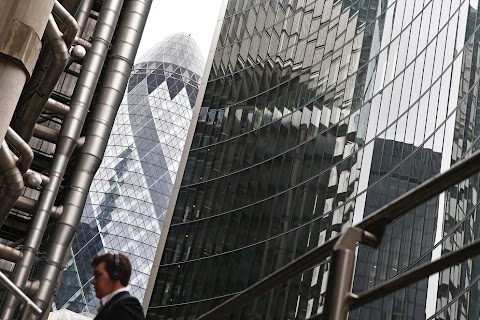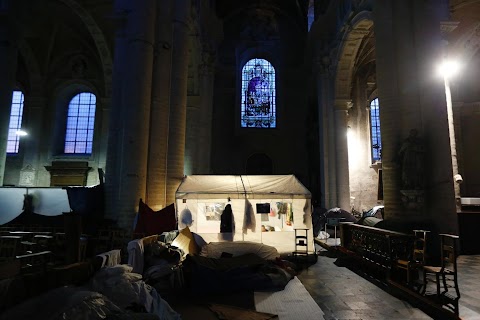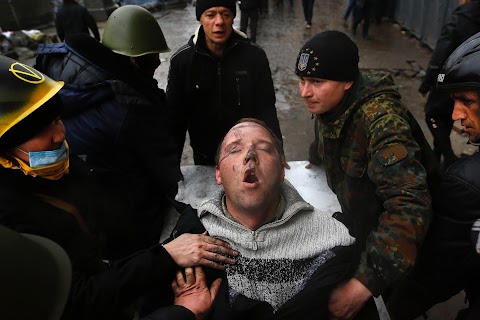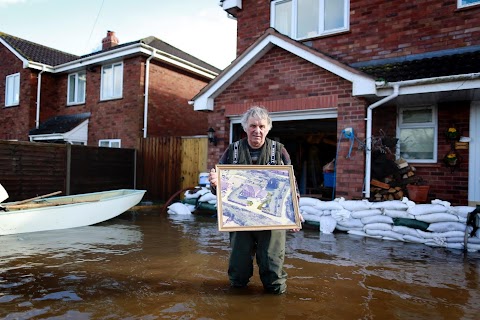
City slickers
 Eddie Keogh
Eddie Keogh
The British capital has a long history as a financial centre, from the 17th century when traders would gather in coffee houses to the modern era of electronic transactions made in a fraction of a second.
In recent years, London’s financial services industry has been hit by scandals and redundancies in the wake of the global economic crisis. But the hum of the city continues, and new jobs in the financial sector are increasing.

Today over half a million people work in the City of London and Canary Wharf - London’s big financial districts.
The City accounts for roughly one-tenth of the British economy and is rivalled globally only by New York.
Slideshow

A worker is seen through a sculpture outside Lloyds of London.

A doorman - known as a waiter - stands outside Lloyds.

Workers cross London Bridge in the rain.

A man holds his briefcase as he walks across London Bridge.

A man smokes a cigarette outside The London Stock Exchange.

A worker walks up the steps from Bank station in the City of London.

Workers walk through Liverpool Street station in the financial district.

A commuter travels up an escalator at Canary Wharf, London’s secondary financial centre.

Workers look at their phones while walking through Canary Wharf.

A man smokes outside his office in Canary Wharf.

A man looks at his phone amid the skyscrapers of Canary Wharf.

A worker travels up the escalator from Canary Wharf underground station.

A woman walks in the rain at the station.

A worker arrives at his office in Canary Wharf.

People walk through the rain in front of the Thomson Reuters building.
"The relentless cycle never seems to change for the financial markets’ suited workers."
The beast that is Canary Wharf underground station spits out its batch of workers every morning and swallows them up again every evening, Monday to Friday.
The relentless cycle never seems to change for the financial markets’ suited workers, who return every day, smartphone in hand. They are concentrating on their emails – the oxygen of business.
It’s no easy thing to focus on a phone in your left hand, carry a cappuccino in your right, and manoeuvre through crowds, ticket machines and escalators without missing a word. Presumably they’re even better with numbers.
I enjoyed watching and photographing the people of London’s financial districts. Ninety percent of the work I do for Reuters is photographing sport, so this project was a case of entering another world – watching and waiting to get my shots.
As a man with a camera, I normally get an inquisitive glance or a spontaneous smile as I go about my job. But here the importance of the smartphone and the destination are paramount and people barely look up.
The sheer volume of people employed in these areas is daunting. According to the City of London Corporation, some 400,000 people work in the City of London business district, while another 130,000 or so work in Canary Wharf – the city’s other big financial centre. That makes a total of over half a million people hurrying back and forth.
The fast-paced world of finance has a long history in London. Back in the late 1600s traders were already doing business in the coffee houses of the city, and in 1801 London’s first formalised modern Stock Exchange opened up its doors.
In days gone by, the City had a very distinctive feel, with traders in coloured jackets working in ‘open outcry’ exchanges, where they shouted at one another across the floor. It is a very different place these days; most business is done on screens, both desktop and pocket sized.
No more bowler hats, oak-handled umbrellas or old boys networks. But the history of the city, and the hustle and bustle of its workers, remains.














